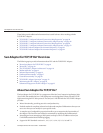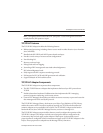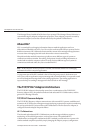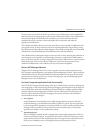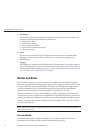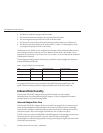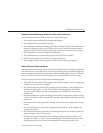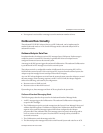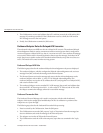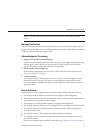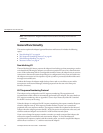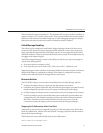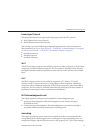
Message Verication
Message verication begins with reading the message from the external system. The message is
expected to match the MLLP envelope, since both HLLP and MLLP envelopes have the Start of
Block (SOB), End of Data (EOD), and a Carriage Return (CR) in common.
If a message fails the read verication, it is considered bad data. If read by an inbound Adapter,
this failure causes the Adapter to generate a Canned HL7 NAK. An outbound Adapter ignores
the message and logs a warning, reporting the nature of the problem to the log le.
An HLLP envelope needs further verication as to whether it is data or a NAK, as well as the
Block Checksum and Block Size. The Adapter behaves as described above if the HLLP envelope
verication fails.
After stripping the message envelope, the RA hands the de-enveloped message to the inbound
Collaboration where it is parsed into the generic event Message Library. This ensures that the
general form and MSH segment are valid. If the MSH property is set, the Collaboration veries
that the elds specied in the HL7 segment section are the same as those of the received MSH,
otherwise, a NAK is returned.
Acknowledgment Processing
■
Adapter Generates HL7 Acknowledgment
In this scenario, the Adapter generates an HL7 ACK after receiving and successfully storing
the message in a queue; otherwise, it generates an HL7 NAK. The HL7 ACK or NAK is
placed in the proper envelope and sent to the external system.
■
ESB Sends HL7 Acknowledgement
In this scenario, the Adapter acts as a receiver in a Delayed ACK scenario, as described in
“Inbound Receiver Message Mode” on page 15.
■
Canned HL7 NAK
A canned HL7 NAK is created when a read error occurs or when an message cannot be
identied as an HL7 message. The initial test ensures that the message conforms to the
lower-layer protocol. The Resource Adapter uses the MSH section parameters to create an
appropriate NAK.
Recourse Actions
Recourse actions can be congured for an inbound Adapter for the following conditions. For
more information, see
“Recourse Actions” on page 21.
■
The empty read limit is reached.
■
The maximum number of NAKs are received by the Adapter.
■
The maximum number of NAKs are sent by the Adapter.
■
The maximum number of response timeouts is reached.
■
A NAK response is received.
SunAdapterforTCP/IPHL7Overview
SunAdapterforTCP/IPHL7User's Guide • October200916



